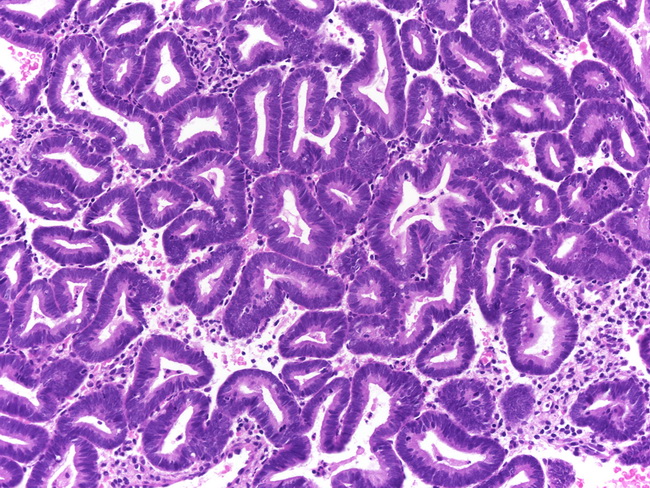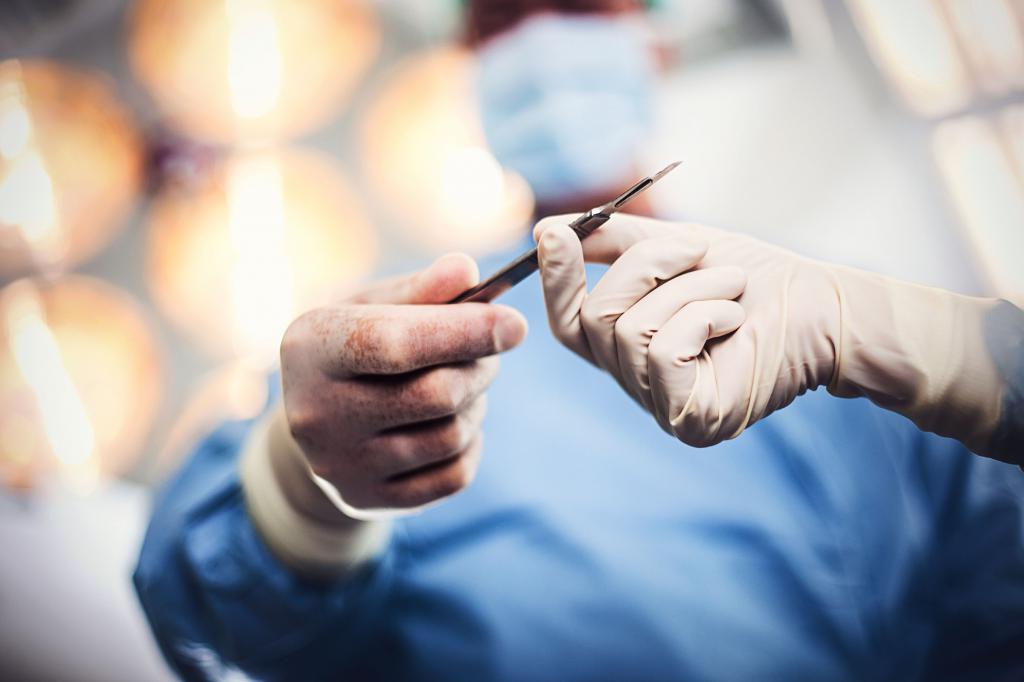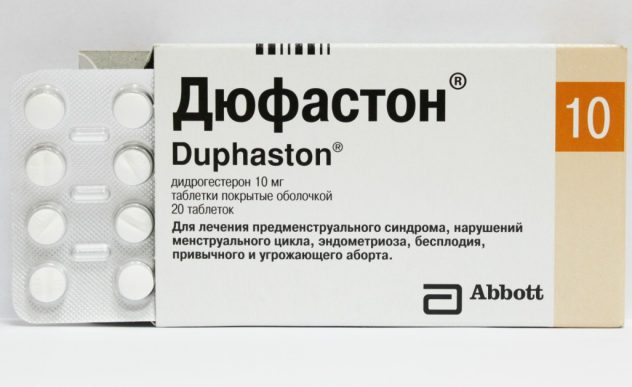Endometrial hyperplasia is characterized by excessive proliferation of mucous membranes in the uterus. The development of the disease can begin at any age. It occurs in 25% of all women with gynecological diseases. Therefore, to know that this is endometrial hyperplasia - and how to treat it, is important for everyone.

Description
With the development of an ailment in the endometrium, unnatural processes occur during menstruation. At the beginning of the cycle, the ovaries actively secrete estrogens. This leads to the fact that the endometrium thickens, which is conceived by nature to prepare the body for pregnancy. By the middle of the cycle, the ovary secretes an egg. Then progesterone is actively released. He is responsible for preparing the endometrium for obtaining fertilized eggs. In cases where a woman does not become pregnant, the level of estrogen and progesterone decreases. This provokes the beginning of a new cycle. With hyperplasia, female hormones become too much in the body, and endometrial tissues are actively growing.
Causes
Having discovered endometrial hyperplasia on an ultrasound, the first thing to do is determine the cause of its appearance. In fact, the disease always develops against the background of hormonal disruptions, when the estrogen content increases. It is he who leads to the proliferation of tissues.
Among the reasons leading to increased secretion of the hormone, the following factors are noted:
- Excess fatty tissue promotes the production of a certain number of estrogens. Progesterone levels, on the contrary, become lower.
- Symptoms of the disease appear during the perimenopausal period. Then the female body undergoes hormonal changes.
- Often, taking a number of drugs aimed at treating a malignant tumor of the breast leads to the development of this disease.
- Polycystic ovaries are also a prerequisite for the development of the disease.
- The predisposition to endometrial hyperplasia is inherited.
About ailment
The basis of the disease is an overly active reproduction of cells, which leads to an increase in the volume of the uterus. At risk are women with increased production of estrogen with a reduced concentration of progesterone.
Patients with such diagnoses as mastopathy, uterine fibroids, polycystic ovaries, endometriosis, hypertension, liver diseases, diseases that are associated with an increase in blood sugar are very likely to suffer from the disease.
Often, representatives of the female face during menopause and late menopause, who suffer from obesity, diabetes mellitus and hypertension.
Varieties
Before treating uterine endometrial hyperplasia, a variety of the disease is determined. There are 4 types:
- In the case of glandular hyperplasia, glandular tissues grow.
- If glandular cystic hyperplasia was diagnosed, then we are talking about the presence of cysts in the expanding tissue.
- When hyperplasia of the glandular-fibrous type is detected, it is taken into account that the connective tissue along with the glandular has grown.
- Atypical hyperplasia is the most dangerous, as it is a sign of the presence of precancerous cells in the body. This kind of disease often leads to malignant tumors in the uterus.
Modern classification
According to the classification, hyperplasia is simple and complex, atypical or without atypia.
With simple hyperplasia, the number of glandular and stromal structures increases. There is an increase in the size of the endometrium, a change in its structures. Part of the gland expands according to the cystic type. The vessels are distributed evenly. Atypia is not observed in the nuclei. In 3% of cases, a disease of this type develops into a malignant tumor.
Glandular cells take on an unusual, rounded shape. Often polymorphism appears in the nuclei of cells, vacuoles expand. In such cases, there is a 20% chance that cells will later become cancerous.

Complex hyperplasia is manifested in the fact that the glands in the endometrium are too crowded or separate foci. The wrong structure of the gland is observed, there is an imbalance in the growth of the stroma and glands. Atypia is not observed in the nuclei. Cancer develops with a 10% chance.
Complex atypical endometrial hyperplasia is recognized as the most dangerous form for patients. In 57% of cases, it passes into uterine cancer. With it, polyperation of the epithelium is significantly expressed, atypia is established in cells and tissues. A variety of shapes and sizes appears in the glands.
Large cells are present in the epithelium, whose nuclei are elongated and polymorphic.
Separately, a moderate form of hyperplasia is isolated. This is a transitional phase from simple to complex variety. There are few individual signs in it; as a separate stage, it is not always distinguished.
Symptoms
The most common sign of a disease is bleeding. If a similar symptom is detected, it is urgent to treat uterine endometrial hyperplasia.
Another sign of the development of the disease is an increase in the duration of menstruation. Their abundance is also growing. Sometimes for a month a female continues to flow blood with a change in intensity. This leads to anemia.
Sometimes discharge occurs during the intermenstrual period, while they are smearing. And this is also a sign of the presence of the disease.
If the number of days of the menstrual cycle is reduced to 21 days, then this is also a sign that it is time to treat endometrial hyperplasia.
Any bleeding that started after menopause should alert. It is necessary to pay a lot of attention to this phenomenon. The treatment of endometrial hyperplasia in menopause is somewhat different from the methods of treatment of women of childbearing age. Even if the discharge was smearing, you should immediately consult a doctor. This symptom is characteristic of both hyperplasia and cancer.
Necessary diagnostics
Most often, patients are examined using ultrasound. For this, an intravaginal sensor is used. It gives a review in which it is clear where the endometrium thickens, how many polyps in the uterus, where they are located. The simplest diagnostic method is recognized by ultrasound. It is the least traumatic, but at the same time, the reliability of the data obtained through its application is only 60%.
Echosalpingography is aimed at examining how passable the fallopian tubes. But in the process of diagnosis with its use, an overview of the uterine cavities appears, and polyps and hyperplasia are visible.
When there are suspicions of the development of hyperplasia in the body, a biopsy of the mucous membranes is also carried out. Then, the data thus obtained are examined with special care under a microscope. The use of such a method leads to high results. But it is not effective if the changes spread by foci. The thing is that there is not a single guarantee that the material taken belonged precisely to the focus of the disease.
Sometimes hysteroscopy with targeted biopsy is also used. This method is the most informative. A sample is taken from the source and the result is 100% guaranteed. The doctor assesses the condition of the inner membranes of the organ visually.
Popular and separate diagnostic curettage. With this method, a detailed picture of the nature and stage of the development of the disease is visible. At the same time, it is a method of treating hyperplasia.
During the procedures, the inner membranes of the uterus are scraped, then examining the material on histology.
As a result of the examination, the diagnosis is established with high accuracy. Curettage is a necessary procedure for each patient. The endometrium, which has already been affected, is removed only mechanically.
Sometimes it is necessary to use a radioisotope study of the uterus. In this case, radioactive phosphorus is used. Thus, the stage of the disease, and its nature, and activity are revealed, which is important.
Therapy
They treat the disease with the methods of complex therapy. How endometrial hyperplasia is treated will be described later. There are several stages of treatment. Each of them contains several different techniques. They are selected depending on the type of hyperplasia. Typically, therapy consists of four stages.
Before treating endometrial hyperplasia, bleeding is stopped. Then they are treated with hormonal drugs. Then the cycle is normalized. For 5 years, the patient is observed, while conducting a follow-up examination every 6 months.

In extreme cases, the uterus is removed. But such surgical intervention extremely negatively affects the condition of the woman, since artificial menopause and hormonal imbalance begin.
Hyperplasia drugs
The first thing they do is stop the bleeding. If the patient's condition is satisfactory, then he is stopped using oral contraceptives containing estrogen and progestogen. A gamostatic regimen of funds is used - on the first day a woman takes 5 tablets. Further, the daily dosage is reduced by 1 tablet. Then the medicine is taken for 21 days in 1 piece, starting from the first day, when the patient drinks 5 tablets at once.
How to treat endometrial hyperplasia if hormones are contraindicated? In such cases, therapy begins with curettage of the uterine cavity, using a hysteroscope. Also, this method is used for large blood loss. Often use hemostatic agents. Among them, 10% solutions of calcium gluconate, 5% solutions of aminocaproic acid, 1% solutions of Vikasol or Ditsinona are distinguished. At this moment, also means are used that lead to the normalization of the water-salt balance, blood substitutes. Injections are often used.
At the second stage of treatment, hormone therapy is used, which is necessary in order to reduce the tendency of the endometrium to grow. In order to achieve this goal, use a variety of different hormonal drugs. Be sure to receive according to a strictly prescribed scheme.
High gestagen-rich products are usually needed. Often take one tablet from 16 to 25 days of the cycle for three to six months. How to treat endometrial hyperplasia in each case, the doctor determines. The list of drugs that are used during therapy is very wide. What tablets treat simple glandular endometrial hyperplasia? Agonists are used to normalize the central nervous system and endocrine system. At the moment, agonist drugs are used to treat all types of hyperplasia.
They are usually combined with gestagens for three to six months. At the moment, the most common use is goserelin and buserelin.
Along with progestogens and agonists, combined oral contraceptives are used. The use of monophasic drugs is carried out as follows: one unit from 5 to 25 days in each menstrual cycle, and three-phase ones from 1 to 28 days. Whether it is necessary to treat endometrial hyperplasia with monophasic and three-phase agents, only a specialist will decide. It is important to contact him, and not to self-medicate. How to treat endometrial hyperplasia with folk remedies? You should consult your doctor about this.
At the third stage of therapy, hormonal status and the menstrual cycle of patients of reproductive age or women with persistent menopause after menopause are normalized. Again, only the doctor determines how to treat endometrial hyperplasia. Testimonials from other patients should not affect the final decision on this issue.
Each female in the postmenopausal period, it is important to complete the menstrual cycles and achieve persistent menopause. For this purpose, use products containing male sex hormones.
Sometimes conservative methods of treatment are ineffective. In such cases, surgery is required. The way in which glandular cystic hyperplasia of the endometrium is treated, other types of the disease, differs from the treatment of the atypical form of the disease. In the first case, the endometrium is removed, and in the second, the entire uterus.
Indications for surgical treatment are limited to the list below.
For women before menopause:
- the presence of atypical complex endometrial hyperplasia, which is not amenable to traditional methods of treatment for three months;
- atypical and non-atypical hyperplasia, provided that the effect of her therapy does not occur within six months.
For patients who have survived menopause, the indication will be both a complex atypical and non-atypical disease. It also includes a simple atypical variety of the disease.
At the fourth stage of therapy, the patient's health status is monitored for five years every six months.
How to treat endometrial hyperplasia "Dufaston"? The drug is an analogue of the hormone progesterone. It is used in the treatment of a number of gynecological diseases that are associated with progesterone deficiency.

What is the treatment of endometrial hyperplasia in 50 years? If there is a heart disease, then hormonal drugs are used. The thing is that with age in an increasing number of patients, health deteriorates.
How to treat focal endometrial hyperplasia or any other type of ailment? The attending physician will tell more about this.
Complications after treatment
Although treatment is carried out using standard manipulations, which are often performed, sometimes curettage leads to many negative consequences. Among them:
- Tears in the cervix.
- Infertility.
- Injuries in the uterus, including significant ones, up to the appearance of through holes in them.
- Infections in the uterus.
- Repeated bleeding if the doctor has not removed all areas of the endometrium.
Scraping
Before treating simple endometrial hyperplasia, you need to understand that traditional methods of therapy can lead to complications. Pregnancy after curettage is possible. Moreover, it may well occur in a month if the patient has not used hormonal drugs. If she followed all the instructions of a specialist, treated with hormones, then she can become pregnant already 2 months after the completion of the course.
In which cases pregnancy after the procedure is possible, and in which - not, only the attending physician determines. The thing is that a specialist for this examines endometrial scrapings under a microscope.
Most often, they do not recommend becoming pregnant immediately after the first cycle. There are no guarantees that the internal uterine membranes have already been updated and can allow the fetus to develop normally before the deadline. Gynecologists advise you to wait about 3-6 months before you stop using contraception.
Can hyperplasia not be treated?
The most dangerous complication of hyperplasia is malignancy of structures, which leads to the formation of malignant neoplasms. That is, the cells simply degenerate into cancerous. It is important to remember that the disease itself will not go away. It must be treated in consultation with a specialist. Before treating uterine endometrial hyperplasia with folk remedies, you need to undergo a traditional course of therapy. None of the means of alternative medicine is able to completely rid a woman of hyperplasia.

Also, due to the disease, a woman cannot become pregnant: the embryo will not be fixed in her uterus, since she was deformed by the foci of the disease.
Intimate life with endometrial hyperplasia
During the course of the disease, you can have sexual intercourse. Many gynecologists recommend actively having sex. But if there are pains, uncomfortable sensations, then you need to focus on treatment and in no case be tormented. If in the process of therapy a woman entering into an intimate relationship and experiencing pain with it decides to still have sex, then the pain can be removed by increasing the length of the foreplay, careful attitude of the partner, and the selection of poses. Of course, you cannot have sex with bleeding and severe soreness.
Soreness during intercourse is the main sign of the development of the disease. Most women with this diagnosis show a similar symptom.
Along with pain, bloody discharge is often manifested. Before they usually begin aching pain in the genital area. Many women do not pay attention to these signs and trigger hyperplasia. But the painful sensations, excess discharge are direct evidence that there are deviations in the body, that you need to immediately contact a specialist.
A healthy female does not experience pain during sex.
Reviews
According to most reviews of women, endometrial hyperplasia is not completely treated. You can only support the body, suffering from an ailment. Many go through many curettage procedures. Sometimes the uterus is removed. But conscientious doctors fight to the last to preserve the organ. .
Folk remedies
, , . , , . , .
? . .
, , . , , , , .
The main goal in therapy is to block the excessive production of hormones, as these conditions provoke the division of cancer cells. Alternative medicine methods are aimed at solving this particular problem.
Herbs

How to treat glandular endometrial hyperplasia? A number of herbs can suspend pathology. It:
- White bloodroot.
- Comfrey.
- Vorobeynik.
- Bruise.
- A little egg.
- Black root.
Often there is the use of herb-antagonists of female hormones. We are talking about fireweed, yarut, colza. To the later stages of hyperplasia, they start taking alcohol tinctures of the hemlock.
How to treat endometrial hyperplasia in menopause? This can be done using tinctures from viburnum, nettle, peony, and pine forest. It is believed that milk thistle, and the root of discoera, sleep-herb, and linseed oil help.
Fees from these herbs can solve the problem. It is useful to use them for prevention.
Recipes
From ancient times, nettle decoctions helped to defeat many ailments. These included endometrial hyperplasia. To conduct therapy using this herb, you will need to prepare a tincture from the plant. To do this, take 200 g of nettle and pour 500 ml of vodka or alcohol. Insist the mixture for two weeks, and then drink every day a teaspoon in the morning and evening. Such treatment helps to restore the immune system, improve the condition of the uterus.
The next effective alternative method of therapy is cucumber decoction. To prepare it, cucumber whips are dried, and then 50 g of the component is boiled in 0.5 l of water. Boil the product for no more than 5 minutes, then leave it for 60 minutes, drink 100 ml three times a day.
To get rid of endometrial hyperplasia, drink and decoctions of the peony. To do this, dilute the plant extract with water in a ratio of 1: 2. The initial dosage is 2 ml. Take broth three times a day. It contributes to the normalization of hormonal levels, prevents the further development of the disease.
Supporters of alternative medicine also advise drinking plantain infusion 4 times a day. Leaves of grass are finely chopped, and then brewed in a glass with boiling water. Insist a decoction for 2 hours. Filter through cheesecloth before use.
Traditional healers recommend the use of herbal supplements to combat hyperplasia. For example, every day they advise drinking 0.5 cups of collection with the roots of a serpentine, shepherd’s bag grass, calamus roots and cinquefoil, knotweed grass, and nettle leaves. All the ingredients are mixed in the following proportion: 1: 1: 2: 2: 2: 2. The collection is thoroughly ground, and then 2 tablespoons of the mixture are taken and 0.5 l of boiling water is poured. For 5 minutes, the broth is boiled, and then poured into a thermos, left for 1.5 hours. Take the drug 100 ml at a time. The full course of therapy lasts 1 month, then take a break for 10 days, and then repeat the procedure.
Proven recipes from alternative medicine will soon get rid of the disease, if they are combined with medical treatment and surgery. It should be remembered that until the last fight for the preservation of the uterus, as its removal provokes a number of negative consequences in the body. There are cases when, due to hormonal imbalance, women with a removed uterus began to experience panic attacks and lost their jobs.
Therefore, it is important to treat endometrial hyperplasia in a timely manner. Its transformation into a malignant tumor occurs in 55% of cases. The likelihood of developing cancer depends on the age of the patient and the history of her previous illnesses.
Other folk methods
In addition to herbal tinctures, they often carry out treatment with leeches. The procedures are repeated twice a year for ten sessions. Leeches thin the blood, lower blood pressure, improve metabolism and stimulate the immune system.
Often used probiotic narine. If you use fermented milk products every day, then the gastrointestinal tract works, the woman gets rid of dysbiosis, the body's immune system is restored.
Douching and infusions of celandine and calendula are also carried out. The full course of therapy is twelve days.
The use of garlic tampons also eliminates endometrial polyps, according to proponents of alternative medicine.
Prevention
As a prevention of the development of the disease, women regularly visit a gynecologist. This is best done twice a year. In order to prevent, many are engaged in fitness, take hormonal contraceptives. It is important immediately after detection to treat inflammatory diseases in the female reproductive system, to control the level of glucose, pressure, weight.

Each violation in the body is subjected to a thorough check. It is important to have a balanced diet. It is he who will keep the weight normal. If the uterus is examined monthly, then the disease can be prevented.
Conclusion
Endometrial hyperplasia is a dangerous female disease. If timely treatment has not taken place, the woman runs the risk of suffering from uterine cancer. Therefore, it is important to know that this is endometrial hyperplasia, and how to treat the disease, and also be examined by a gynecologist every six months.